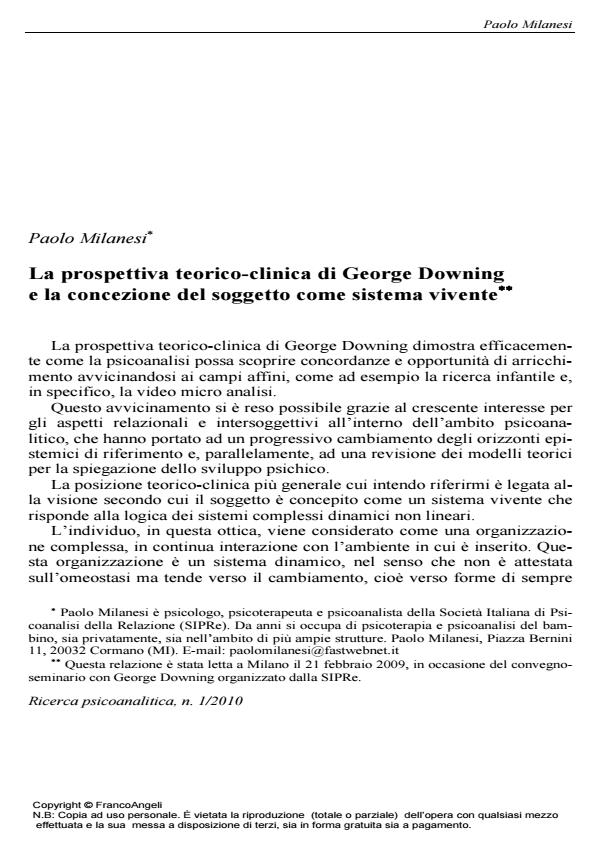La prospettiva teorico-clinica di George Downing e la concezione del soggetto come sistema vivente
Journal title RICERCA PSICOANALITICA
Author/s Paolo Milanesi
Publishing Year 2010 Issue 2010/1
Language Italian Pages 12 P. 19-30 File size 431 KB
DOI 10.3280/RPR2010-001003
DOI is like a bar code for intellectual property: to have more infomation
click here
Below, you can see the article first page
If you want to buy this article in PDF format, you can do it, following the instructions to buy download credits

FrancoAngeli is member of Publishers International Linking Association, Inc (PILA), a not-for-profit association which run the CrossRef service enabling links to and from online scholarly content.
George downing's clinical-theoretical perspective and the conception of subjectivity as a living system - First of all, the Author describes the years-long clinical work carried out by G. Downing, expliciting the underlying theorical referents. Particular attention is payed to the concept of "procedural memory", as an explication of the interactive quality that character-izes every human relationship, from the craddle on. Secondarily, an attempt is made to insert such a conception into the broader perspective of the complex non-linear systems. From this vantage point, the motivation of the subject-system does not depend on the tentatively creation or maintenance of objectboundaries, but on looking for or conquering the state of "systemic coerence" in a creative and continuative process. Also, the concept of "acknow-ledgment" is reviewed from this perspective, beginning from Hegel, his Phenomenology of the Spirit and his description of the process of the self-consciousness. The explicitation by the analyst of its implicit theoretical referents is assumed as a sine qua non to create an ana-lytical pathway able to provide subjective presence in front of one’s internal states and in front of oneself.
Keywords: George Downing, procedural memory, complex non-linear systems, acknowledgment, Hegel
Paolo Milanesi, La prospettiva teorico-clinica di George Downing e la concezione del soggetto come sistema vivente in "RICERCA PSICOANALITICA" 1/2010, pp 19-30, DOI: 10.3280/RPR2010-001003